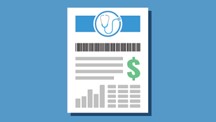This surveillance program is in place to catch the re-emergence of BSE in Canadian cattle, meets international standards set by the World Organisation for Animal Health (WOAH) and allows Canada to maintain its negligible risk status for BSE.
On this page, you'll find information about how the BSE surveillance program works and how you can participate.
Services and information
BSE surveillance program overview
Information on the updated surveillance program and list of BSE laboratories
Number of animals tested
Number of bovines tested for BSE since 1992 under Canada's BSE surveillance program
History of Canada's BSE surveillance program
How the industry and CFIA worked to detect BSE in Canada
Sampling manual for veterinarians
Resources on how to collect and package samples for BSE testing
Features

Invoice the CFIA
Producers, veterinarians and deadstock collectors can claim for eligible services provided
